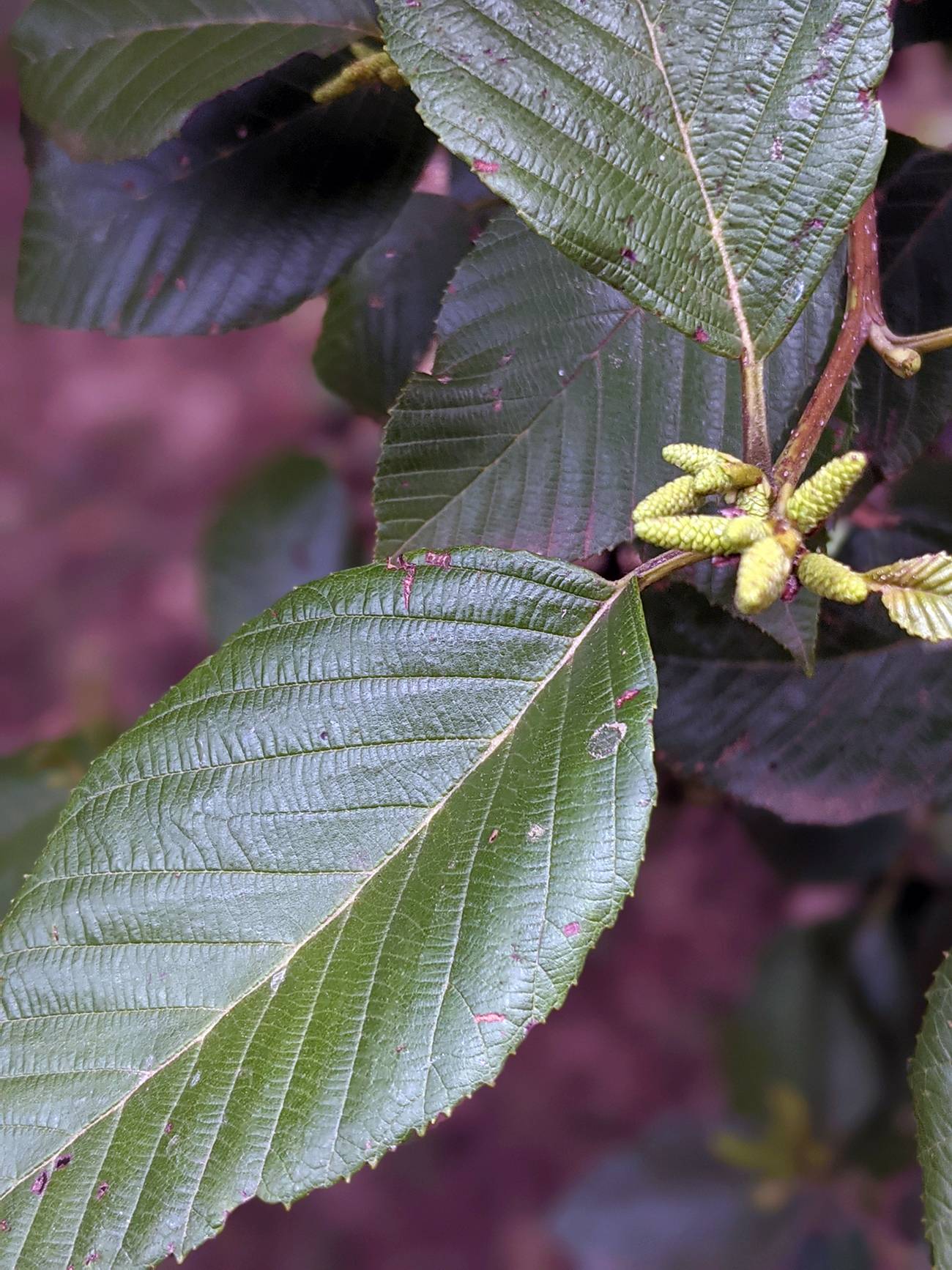
This species is accepted.
The native range of this species is Mexico to N. Argentina. It is a tree and grows primarly in the seasonally dry tropical biome(s). It is has environmental uses, as animal food and a medicine and for fuel.
Alnus acuminata grows up to 25 metres (80 ft) tall with a straight trunk up to 150 centimetres (60 in) thick. The bark has many yellowish lenticels. The leaves are simple, oval with toothed margins. The inflorescences are catkins, separate male and female flowers on the same tree. The male flowers are up to 12 cm (5 in) long and pendulous, while the smaller female flowers are green, erect and resemble a small cone. After wind fertilisation, the female flowers develop into 2 cm (0.8 in) long dehiscent, woody brown fruits. There are 80 to 100 winged seeds per fruit, and these are liberated when ripe, leaving the dried out fruit husks on the tree.
There are three subspecies: Alnus acuminata subsp. acuminata occurs from Colombia and Venezuela south to northern Argentina; Alnus acuminata subsp. arguta (Schltdl.) Furlow occurs from northwestern Mexico south to Panama; and Alnus acuminata subsp. glabrata (Fernald) Furlow occurs in central and southern Mexico.
Distribution and habitat
Alnus acuminata grows at altitudes between 1,500 and 3,200 metres (4,900 and 10,500 ft) in the mountain ranges in tropical Central and South America from Mexico to northern Argentina. It mostly grows on areas with 1000–3000 mm of rainfall, on slopes and valleys. It tolerates poor soils and acid conditions, but prefers silt or sandy silt soils.[10] It is a fast-growing tree, a pioneer species used for watershed protection and can be used for soil improvement because it has root nodules that fix nitrogen.
Timber
The timber is light to mid reddish-brown and fine grained. It is used for building bridges and pilings, for making coffins, boxes, crates, furniture and plywood. It also makes a good firewood that burns steadily.
Copyright (c)2020. Data portal development has been supported through the cooperation of Biocultural Diversity International and the National Herbarium of Rwanda (NHR)
at the Center of Excellence in Biodiversity and Natural Resources Management (CoEB).
We are currently actively seeking additional funding for this project.
Powered by Symbiota software with site management and data curation support by Michael B. Thomas, PhD. Usage Policy.






